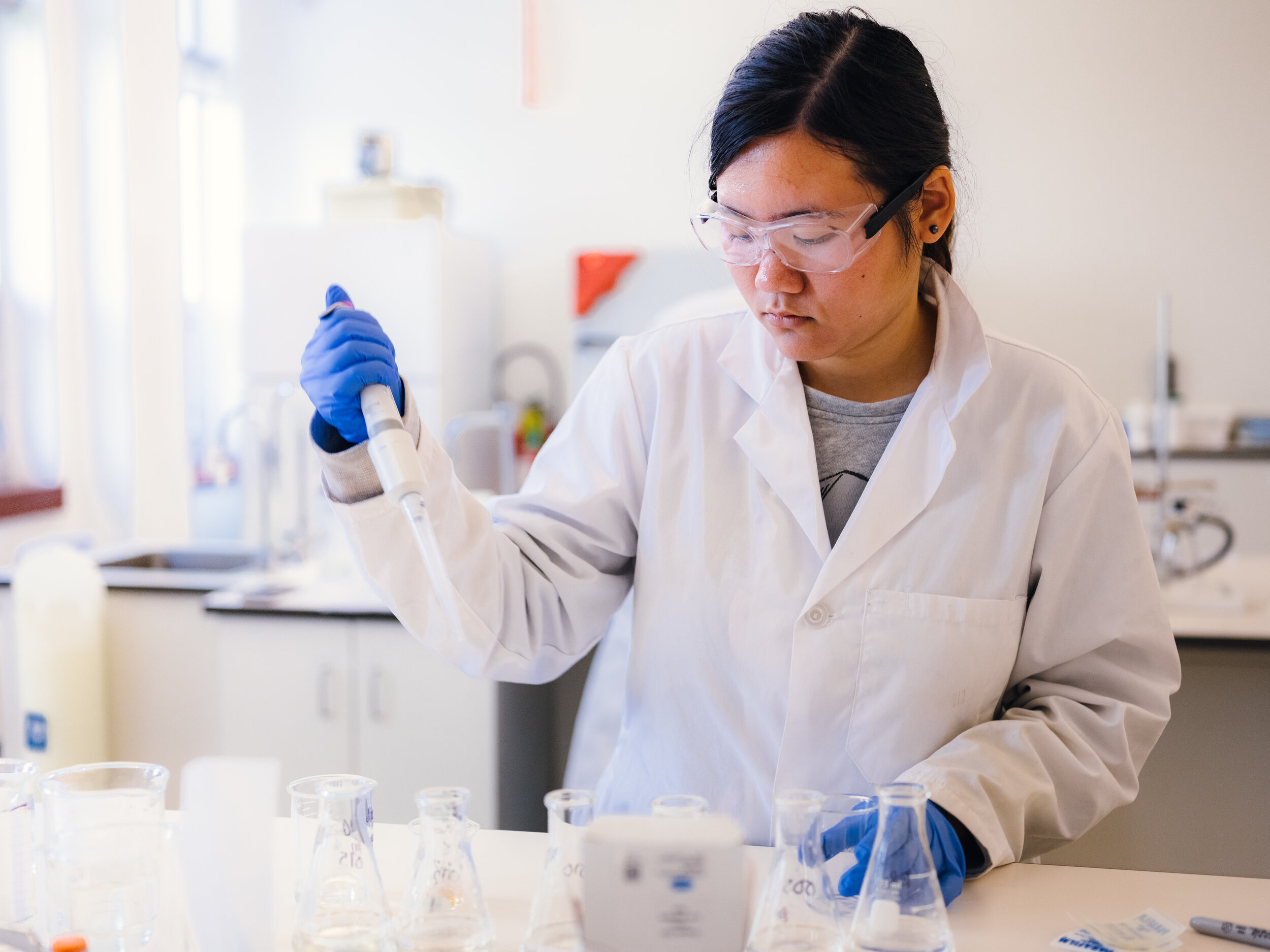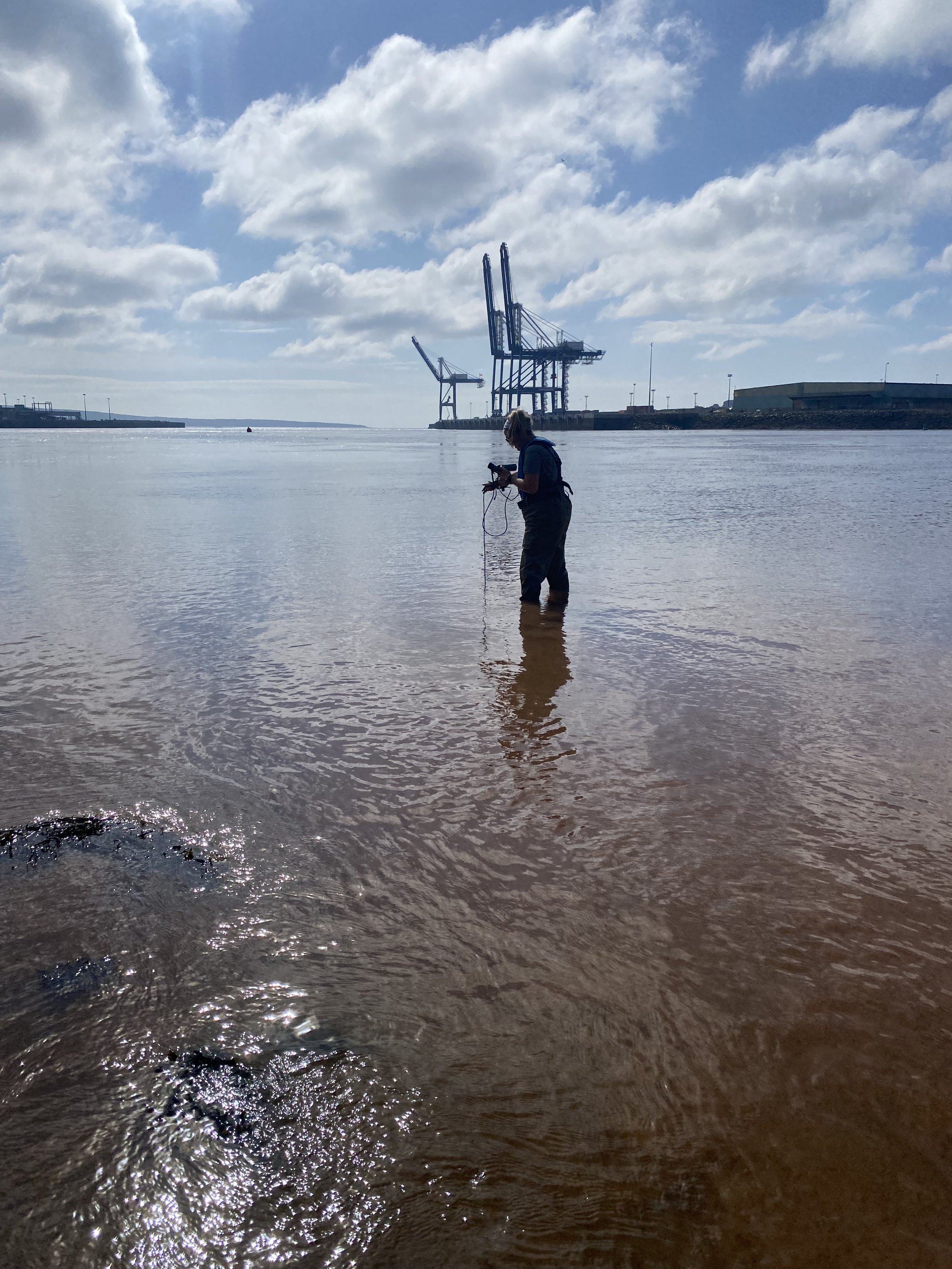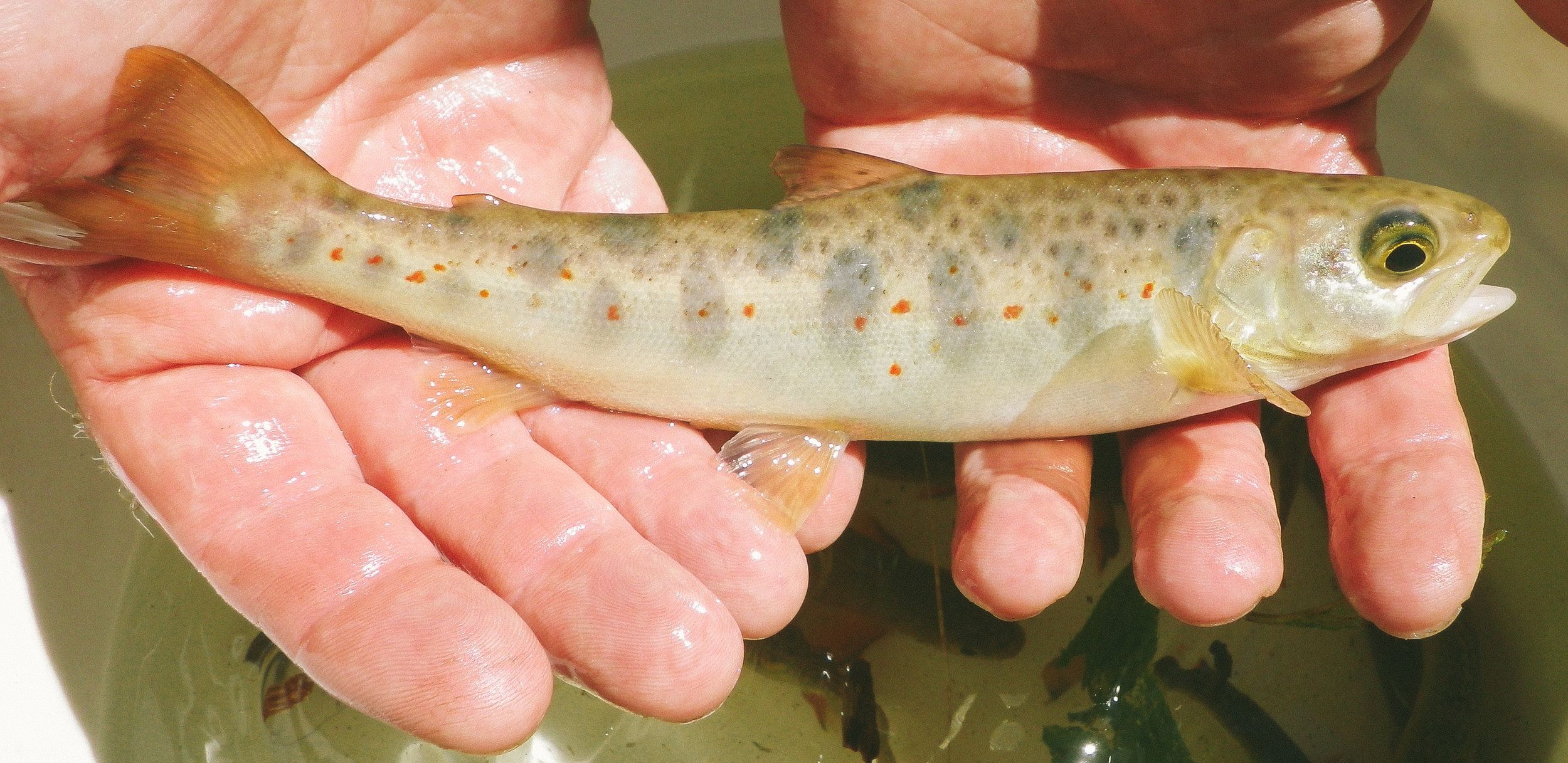
WATER QUALITY MONITORING
Water Quality Monitoring
Did you know that ACAP has been monitoring the water quality of Marsh Creek since 1993? Over the last 25 years, more sites have been added to our regular monitoring program and we now have more than 30 water quality monitoring sites!
In the past, the objective of the Marsh Creek Water Quality Monitoring project was to retrieve and record as much data as possible prior to the removal of raw sewage outfalls within Marsh Creek. Following the cessation of raw sewage deposition in late 2014, the objectives of the project continued, with a mind toward evaluating the recovery the water quality since this historic Harbour Cleanup milestone. Since the completion of Harbour Cleanup, the Water Quality Monitoring project has expanded into other watersheds within the Greater Saint John area.
The following parameters help to measure the health of the water, and to note any changes over time. Through water quality monitoring, pollution prevention and remediation programs can be designed, specific to various sites. Long term monitoring can tell us whether the work and programs implemented are effective, or whether problems are still emerging.
Temperature: Water needs to be cold enough for sensitive species (e.g. Atlantic salmon) to survive.
Dissolved oxygen: The amount of oxygen available in water is important for fish and other aquatic species. Species like trout require high amounts of oxygen for a healthy life. Oxygen levels drop with higher temperatures and nutrient levels, which can be caused by pollution and climate change.
pH: This measures how acidic/basic the water is- neutral levels are best for fish.
Salinity: Salinity fluctuates with the tides, and tidal inflows can impact freshwater species.
Turbidity: Suspended solids in water scatter light, making water appear dirty or murky.High turbidity can clog fish gills and impact plant/algal growth.
Nutrients: While many nutrients (like phosphorus and ammonia) are essential, high nutrient levels can cause excessive algal growth and harm ecosystems.
E. coli and Total Chloroform (TOC): These bacteria live naturally in the intestines of some animals and can be found in their feces. Water can become contaminated with these bacteria when animal or human feces enters the waterway.
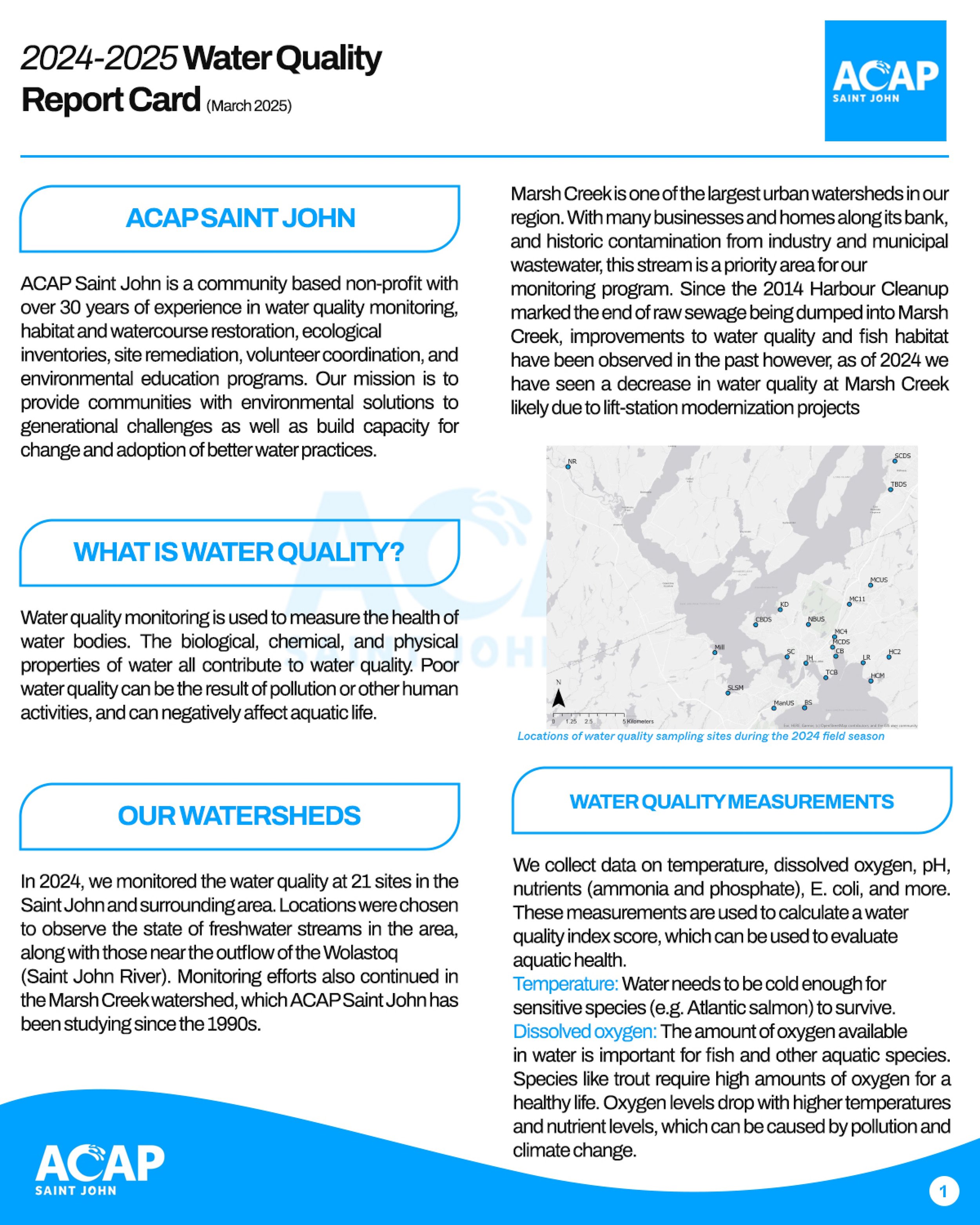
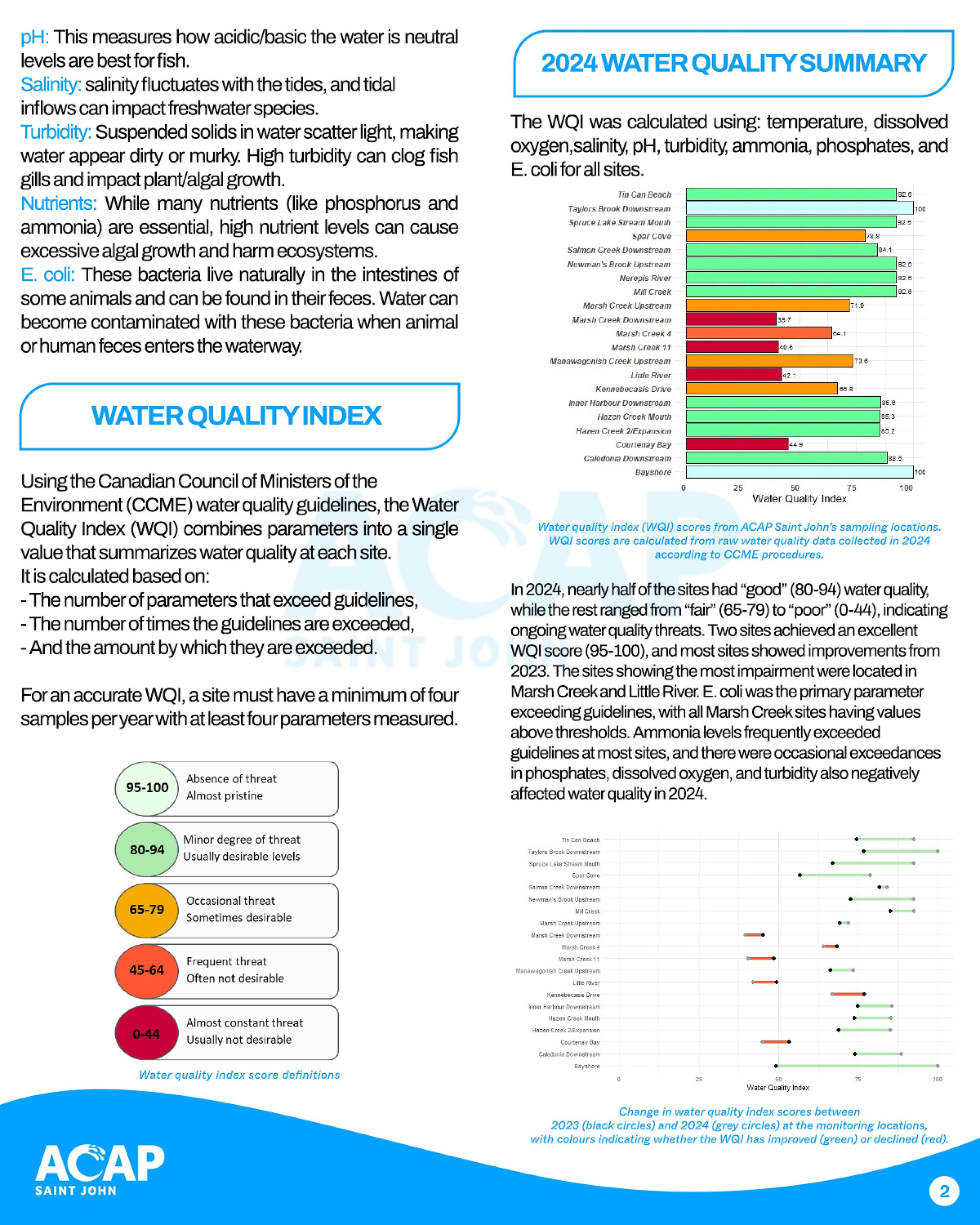

Interested in learning more about the water quality in your favourite stream? Looking to find temperature levels in Marsh Creek or do you just want to explore our historical data? Check out this interactive map showcasing data we’ve collected over the last 30 years!
Want to learn more?
Atlantic DataStream is an open access platform for sharing information on freshwater health. It currently allows users to access, visualize, and download full water quality datasets collected by 23 monitoring groups from Newfoundland and Labrador, New Brunswick, Prince Edward Island and Nova Scotia.
